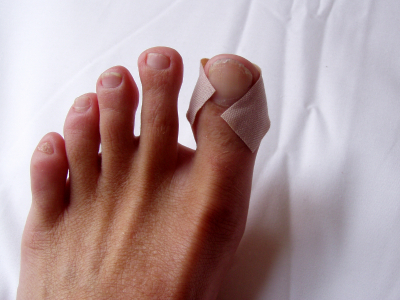A few years ago at our national meeting, I heard a report about increasing problems with one of the ingredients in “triple antibiotic” ointment, brand name Neosporin. At that time a speaker at the meeting mentioned an 8% allergic response to one of the ingredients in triple antibiotic, specifically Neomycin. This past week I just returned from a seminar where an expert in wound care discussed a severe allergic response to neomycin which almost killed one of their patients. The wound care expert said that about 11% of people have an allergic response to Neomycin.
Both Neosporin and the generic triple antibiotic contain three antibiotics: Neomycin, Polymyxin B, and Bacitracin. These antibiotics are promoted for minor cuts and scrapes. Most people feel that triple antibiotic “prevents infection,” “helps wounds heal faster,” and “helps prevent scarring.” That is just not true!
How often does someone in the family get a minor skin cut? It can be as simple as a scraped knee or a paper cut. Our natural reaction is to do “something” to relieve pain and make the injury better. So why not put some triple antibiotic ointment on the cut?
As is often the case, Wikipedia has the answer. When you look up the entry for Neosporin here’s what it says: “Neosporin is marketed for the prevention and fighting off infections and speeding the healing of wounds. However there is little data supporting these claims, and in clinical trials, Neosporin is not more effective than simple petroleum jelly.” But even if it’s no more effective than petroleum jelly at least it does something right?
Well…. It may be a lot worse than petroleum jelly. The use of antibacterial ointment that contains Neomycin (one of the 3 antibiotics in triple antibiotic) is a problem. As I noted before, the incidence of allergy is quite significant to Neomycin. And while existing allergy or sensitivity to this drug is still fairly low some people can develop sensitivity over a relatively short period of time — especially if the ointment is used under a Band-Aid or another dressing as it usually is. It is not uncommon to see rashes develop in a week or so from sensitivity to Neomycin.
A common story in our practice is that someone has an ingrown toenail and puts Neosporin and a Band-Aid on it to prevent infection. Being conscientious, our patient changes the bandage and applies more Neosporin twice daily. On day three, the area begins to look red, so fearing infection has begun, they start changing the Band-Aids and using more ointment three or four times a day. By day 7, the area has become red and angry-looking and is weeping fluid. They decide at that time to come to the doctor to treat “infection” that overcame even the power of the antibiotic ointment. I examine the patient and asked if they have been using triple antibiotic ointment. When they wonder how I knew, I mention that what we are seeing is a common reaction to the ointment, not an infection. I tell them to just wash and clean the area, and maybe use a little steroid cream. Within a few days the problem is gone.
So what can you do? The best treatment for minor cuts and scrapes is simple cleaning and bandaging. Use of creams, ointments, etc. is rarely of any use. Second, if you insist on using an antibiotic cream, use one that does not contain Neomycin. We recommend over-the-counter Bacitracin or Amerigel. (Amerigel is my favorite since it promotes wound healing and kills a high percentage of MRSA.) If an area of injury turns red, warm or painful, see a doctor immediately.